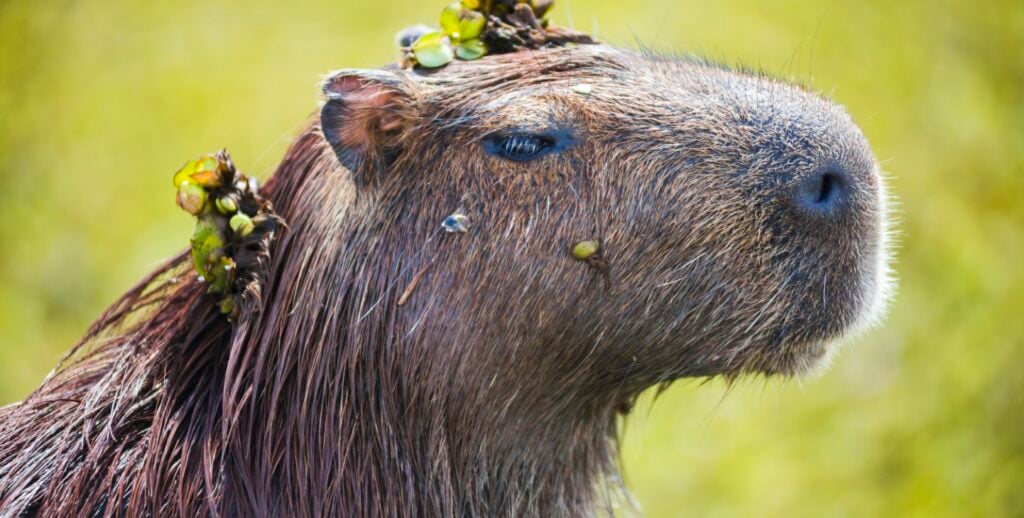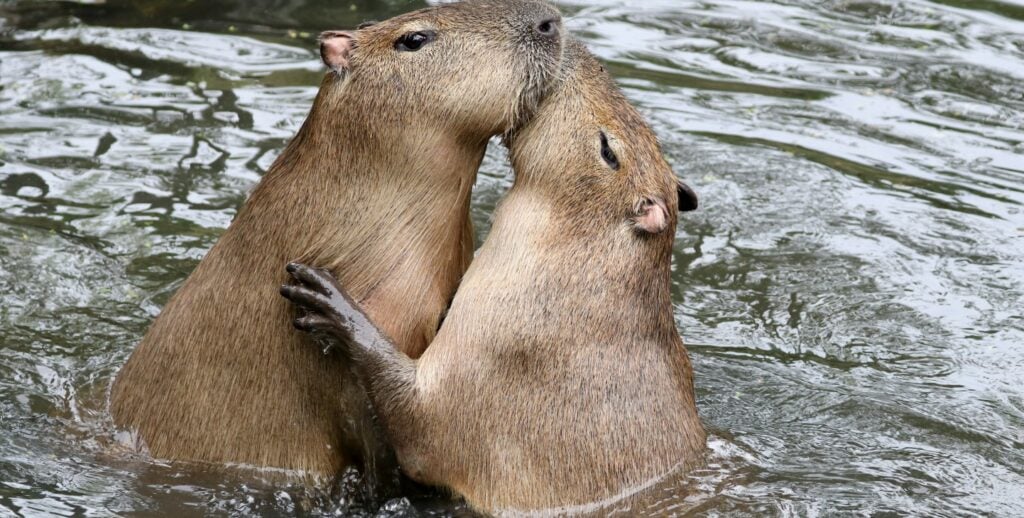Explore the different types of peccaries found in Costa Rica, as well as their importance in the local ecosystem, habitats, behavior, and social structure.
GVI
Posted: May 10, 2023

Melissa Attridge
Posted: March 18, 2023
Welcome to the captivating world of capybaras! These gentle giants are the world’s largest rodents and have become increasingly popular due to their unique physical characteristics, social behaviour, and lovable personality. In this blog, we will explore everything you need to know about these fascinating creatures.
Capybaras are herbivorous animals that can grow up to four feet in length and weigh up to 64 kilograms. They have short, sleek fur that ranges in colour from reddish-brown to greyish-brown, and their eyes, nostrils and ears are located on the top of their heads, allowing them to see, smell and hear while swimming. Capybaras also have webbed feet, which makes them excellent swimmers. They have a thick, barrel-shaped body that sits atop four short, sturdy legs.
Capybaras are native to South America and can be found in a variety of habitats such as savannas, forests, and wetlands. They prefer to live near water and can often be seen lounging in rivers, ponds, and other bodies of water. Capybaras are primarily found in countries such as Brazil, Venezuela, Colombia and Argentina, but their geographic range extends to other parts of South America as well.
Capybaras are highly social animals and live in groups of up to 20 individuals. These groups are typically made up of one dominant male, several females and their offspring. They communicate with each other through a range of sounds, including barks, whistles and grunts. Capybaras are known for their grooming behaviour and are often seen cleaning each other’s fur. This behaviour is not only a sign of affection but also helps to remove parasites and other debris from their fur.
One of the most interesting things about capybaras is their love for water. They are excellent swimmers and are often seen lounging in rivers, ponds, and other bodies of water. In fact, they have even been known to use their nostrils as snorkels when they need to take a breath. Capybaras are also herbivores and have a diet that primarily consists of grasses, aquatic plants and bark.


Capybaras are an important part of their ecosystem and have a unique relationship with other animals. They often share their habitats with a variety of other animals, including birds, reptiles, and other mammals. Capybaras are known to create “ecological niches” that support a range of other animals. For example, their habit of feeding on grasses and aquatic plants can help to maintain the health of their habitats, making it easier for other animals to thrive.
Capybaras are threatened by habitat loss and hunting. However, there are conservation efforts being made to protect these gentle giants. In some areas, capybaras are protected by law, and there are several conservation organisations working to protect their habitats and raise awareness about their importance in the ecosystem.
Capybaras are fascinating creatures that have captured the hearts of many. Their gentle nature, unique characteristics and vital role in their ecosystem make them one of a kind. By learning more about these endearing creatures and supporting conservation efforts, we can help to ensure that capybaras continue to thrive for generations to come. So, next time you see a capybara, take a moment to appreciate these wonderful animals and the incredible world they inhabit.
GVI offers a range of volunteer wildlife conservation programs that allow participants to work on important conservation initiatives around the world. These programs provide a unique opportunity to work alongside experts in the field, gain hands-on experience, and make a positive impact on wildlife and their habitats. Volunteers can choose from a variety of programs, including working with sea turtles in Costa Rica, monitoring wildlife in South Africa, or protecting elephants in Thailand. With GVI, volunteers can join a community of like-minded individuals and contribute to a sustainable future for our planet’s wildlife.

Explore the different types of peccaries found in Costa Rica, as well as their importance in the local ecosystem, habitats, behavior, and social structure.
GVI
Posted: May 10, 2023